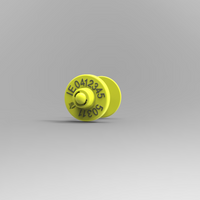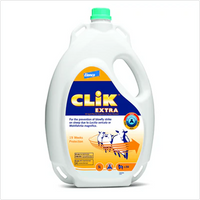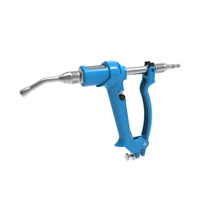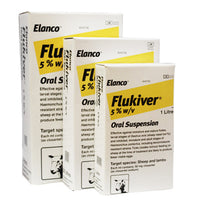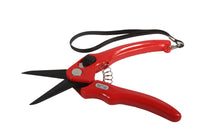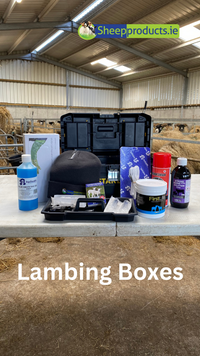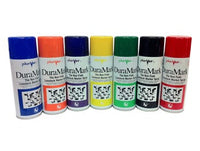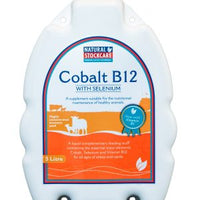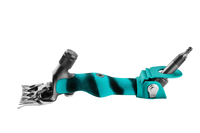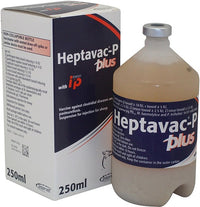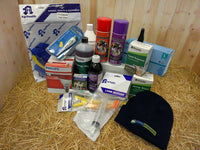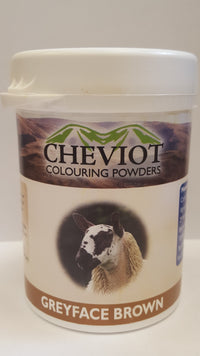You may also like
Active Ingredient: Levamisole hyrochloride, Oxyclozanide
Target Species: Cattle, sheep
Treats and Controls: Liver fluke, roundworms
Administration Method: Oral drench
Withdrawal Time: 28 days for cattle intended for meat and offal, not permitted for use on cattle producing milk for human consumption. 10 days for sheep intended for meat and offal, not permitted for use on sheep producing milk for human consumption.
Dosage for cattle: 12.5 ml per 50 kg of bodyweight
| Dosage rates for cattle | ||||
| Body Weight | Dose Volume | Number of full doses per pack: | ||
| 1 Litre | 2.5 Litre | 5 Litre | ||
| 50kg | 12.5 ml | 80 | 200 | 400 |
| 100kg | 25.0 ml | 40 | 100 | 200 |
| 150kg | 37.5 ml | 26 | 66 | 133 |
| 200kg | 50.0 ml | 20 | 50 | 100 |
| 250kg | 62.5 ml | 16 | 40 | 80 |
| 300kg | 75.0 ml | 13 | 33 | 66 |
| 350kg | 87.5 ml | 11 | 28 | 57 |
| 400kg | 100 ml | 10 | 25 | 50 |
| 450kg | 112.5 ml | 8 | 22 | 44 |
| 500kg | 125.0 ml | 8 | 20 | 40 |
| 550kg | 137.5 ml | 7 | 18 | 36 |
| 600kg | 150.0 ml | 6 | 16 | 33 |
Dosage for sheep: 2.5ml per 10kg Bodyweight
| Dosage rates for sheep | ||||
| Body Weight | Dose Volume | Number of full doses per pack: | ||
| 1 Litre | 2.5 Litre | 5 Litre | ||
| 10kg | 2.5 ml | 400 | 1000 | 2000 |
| 20kg | 5.0 ml | 200 | 500 | 1000 |
| 30kg | 7.5 ml | 133 | 333 | 666 |
| 40kg | 10.0 ml | 100 | 250 | 500 |
| 50kg | 12.5 ml | 80 | 200 | 400 |
| 60kg | 15.0 ml | 66 | 166 | 333 |
| 70kg | 17.5 ml | 57 | 142 | 285 |
Always read the label and all enclosed information for Levafas Diamond before administering to animals!
What is the financial cost of fluke infections?
According to "Liver Fluke - the Facts", a paper published by Animal Health Ireland (AHI), liver fluke costs the worldwide livestock and food industries an estimated €2.5 million per year. These financial losses associated with liver fluke are mainly due to a reduction in the amount of milk and meat produced. Liver fluke can cause a loss of up to 20% in cattle, 30% in sheep and a loss of up to 8% in the milk production of dairy cows.
Animals become infected with liver fluke by ingesting encapsulated Larvae (metacercariae). These larvae are picked up when the animal grazes on contaminated grass. It is very common that farms have a wet and "flukey" area that shouldn't be used for grazing at times of year when the metacercariae are present. Nonetheless, cattle and sheep still graze on these areas so we must accept that liver fluke is still a problem in the livestock industry.
What are the signs and effects of livestock infected with other parasites?
|
Signs and effects of infected livestock |
|
Infection: Gut Worm Symptoms: Diarrhoea, decreased appetite, loss of weight Effects: Gutworm can cause severe damage to the stomach and small intestine which will cause parasitic gastroenteritis, this will not only negatively affect the health of the animal but will affect the profitability for the farmer. |
|
Infection: Lungworm Symptoms: Short, sharp cough that becomes worse with exercise, in severe cases the animal will have obvious difficulty breathing. Effects: Lungworm infections cause a high susceptibility to respiratory viruses and bacteria. Infected cattle are prone to contracting severe bronchial pneumonia which if left untreated can lead to death. |
Recently viewed
Last seen items


